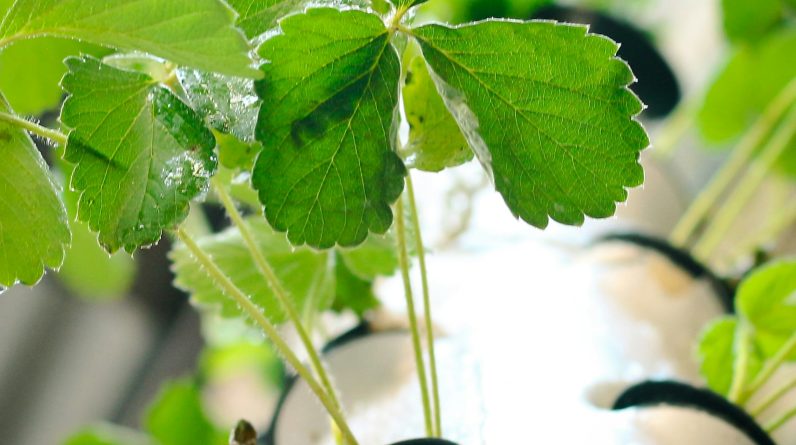
Have you ever wondered why farmers and home gardeners alike are turning to vertical hydroponic systems for their growing needs? In this article, we will explore the rising popularity of vertical hydroponics, the benefits they offer, and why you might want to consider implementing one in your own gardening endeavors. Let’s dive in and discover the world of vertical hydroponic systems together!
Understanding Vertical Hydroponic Systems
Vertical hydroponic systems are a type of growing setup where plants are stacked in vertical columns or tiers, allowing for more efficient use of space. These systems typically use a soil-less growing medium and deliver a nutrient solution directly to the plant roots, promoting faster growth and higher yields. This innovative approach to gardening is gaining traction due to its ability to maximize space while producing bountiful harvests.
Benefits of Vertical Hydroponic Systems
Vertical hydroponic systems offer a plethora of advantages for both commercial farmers and hobbyists. By growing plants vertically, you can make the most of limited space, making them ideal for urban environments or small gardens. These systems also facilitate easier plant maintenance and harvesting, as everything is within reach at different levels. Furthermore, vertical hydroponics promote efficient water and nutrient usage, resulting in healthier plants and increased productivity.

This image is property of images.unsplash.com.
Reasons Behind the Popularity
The increasing popularity of vertical hydroponic systems can be attributed to several key factors that set them apart from traditional growing methods. Let’s delve into the reasons why these innovative systems are gaining traction among gardening enthusiasts worldwide.
Space Utilization
One of the primary reasons for the popularity of vertical hydroponic systems is their ability to maximize space utilization. By growing plants upwards instead of outwards, these systems allow you to cultivate a greater number of crops in a smaller footprint. Whether you have a limited garden area or wish to optimize greenhouse space, vertical hydroponics offer a practical solution for maximizing yields without compromising on space.
Efficient Nutrient Delivery
Vertical hydroponic systems excel at delivering essential nutrients directly to the plant roots, ensuring optimal growth and development. Unlike traditional soil-based gardening, where nutrients may not reach the plants evenly, hydroponic setups provide a nutrient-rich solution that plants can readily absorb. This precise nutrient delivery system results in faster growth rates, healthier plants, and higher crop yields, making it an attractive option for growers looking to boost productivity.
Climate Control and Year-Round Cultivation
Another factor driving the popularity of vertical hydroponic systems is their ability to control environmental conditions for year-round cultivation. By growing plants indoors or in climate-controlled greenhouses, growers can create a consistent and optimal growing environment regardless of external weather conditions. This allows for continuous production throughout the year, enabling farmers to supply fresh produce even during off-seasons. Additionally, vertical hydroponic systems can be equipped with automated climate control systems, further streamlining the growing process and enhancing crop quality.
Pest and Disease Management
Vertical hydroponic systems mitigate the risk of soil-borne diseases and pests often associated with traditional gardening methods. By eliminating soil altogether and using sterile growing mediums, such as rockwool or coco coir, these systems create a hygienic and pest-free environment for plants to thrive. This reduces the need for chemical pesticides and fungicides, promoting a more sustainable and eco-friendly approach to plant cultivation. Growers can enjoy healthier crops and peace of mind knowing that their plants are less susceptible to common pests and diseases.
Sustainability and Resource Efficiency
Vertical hydroponic systems are recognized for their sustainability and resource efficiency compared to conventional farming practices. By conserving water and nutrients through recirculation systems, these setups can reduce water consumption by up to 90% when compared to traditional soil-based methods. This not only helps in water conservation but also minimizes nutrient wastage, making vertical hydroponics an environmentally conscious choice. Moreover, the controlled environment of these systems enables precise resource management, resulting in higher crop yields with minimal inputs.
Aesthetic Appeal and Customizability
In addition to their functional benefits, vertical hydroponic systems are aesthetically pleasing and highly customizable, adding a decorative element to indoor or outdoor spaces. Whether you opt for a sleek, modern design or a whimsical arrangement of plants, vertical gardens can enhance the visual appeal of any setting. Growers have the flexibility to design their own vertical hydroponic setups according to their preferences and space constraints, making it a versatile and creative gardening solution that complements any décor.

This image is property of images.unsplash.com.
Getting Started with Vertical Hydroponics
If you’re intrigued by the idea of implementing a vertical hydroponic system in your own garden or farm, here are some practical tips to help you get started on your vertical growing journey.
Selecting the Right System
Before diving into vertical hydroponics, it’s essential to choose a system that aligns with your growing goals and available space. Consider factors such as the number of plants you wish to grow, the size of your space, and your budget when selecting a vertical hydroponic system. Options range from DIY setups using recycled materials to commercially available vertical farming towers, each offering different features and capacities. By assessing your needs and preferences, you can find a system that suits your requirements and ensures a successful growing experience.
Choosing Suitable Crops
When deciding which crops to grow in your vertical hydroponic system, it’s crucial to select plants that thrive in a soil-less environment and are well-suited to vertical gardening. Leafy greens, herbs, strawberries, and small vegetables are popular choices for vertical hydroponics due to their compact growth habits and high productivity. Consider factors such as crop height, light requirements, and nutritional needs when choosing plants for your vertical garden. By selecting suitable crops, you can optimize space utilization and maximize yields in your vertical hydroponic setup.
Providing Adequate Light and Nutrients
Light and nutrient availability are crucial for the success of plants in a vertical hydroponic system. Ensure that your plants receive sufficient light for photosynthesis by placing them in a well-lit area or supplementing with grow lights if necessary. LED lights are a popular choice for indoor vertical gardens, providing the full spectrum of light needed for plant growth. Additionally, monitor and maintain nutrient levels in your hydroponic system to support healthy plant development. Use a balanced hydroponic nutrient solution and adjust the dosage according to plant growth stages to promote robust growth and abundant harvests.
Monitoring Plant Health and Growth
Regular monitoring of plant health and growth is essential for ensuring the vitality of your vertical garden. Keep an eye out for signs of nutrient deficiencies, pests, or diseases, and take prompt action to address any issues that may arise. Check the pH levels of your nutrient solution regularly to ensure optimal nutrient uptake by plants and prevent nutrient imbalances. By observing your plants closely, you can identify problems early on and implement corrective measures to maintain plant health and productivity in your vertical hydroponic system.
Harvesting and Enjoying Your Bounty
As your plants grow and mature in your vertical hydroponic system, you’ll soon be rewarded with a bountiful harvest of fresh, flavorful produce. Harvest your crops regularly to encourage continuous growth and ensure a steady supply of homegrown goodness. Whether you’re harvesting herbs for seasoning, leafy greens for salads, or fruits for snacking, the satisfaction of enjoying your own homegrown bounty is incomparable. Share your harvest with friends and family, experiment with new recipes, and relish the fruits of your labor in a sustainable and rewarding way.

This image is property of images.unsplash.com.
Conclusion
In conclusion, vertical hydroponic systems are gaining popularity for their space-efficient design, resource-efficient operation, and numerous benefits for plant growth and productivity. Whether you’re a seasoned gardener looking to optimize space or a novice grower eager to explore innovative gardening methods, vertical hydroponics offer a sustainable and rewarding way to cultivate fresh, nutritious crops. By harnessing the power of vertical growing, you can maximize yields, conserve resources, and enjoy a flourishing garden year-round. Embrace the world of vertical hydroponic systems and elevate your gardening experience to new heights!










